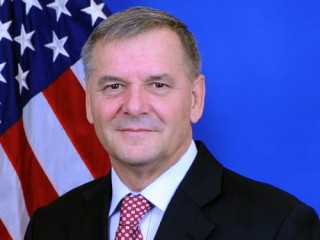The following was excerpted from the U.S. Naval Institute conference report.
Opening the U.S. Naval Institute’s 2012 annual history conference “The History and Future Challenges of Cyber Power” at Alumni Hall on the grounds of the U.S. Naval Academy with the morning keynote segment was former Vice Chairman of the Joint Chiefs of Staff retired Gen. James Cartwright.
Cartwright was regarded as the Pentagon’s top thinker on cyber warfare during his stint as the vice chairman. In his remarks, Cartwright emphasized why the cyber landscape is important – it is a medium that lies between sanctions and military power.
“The tools available to a president or nation in between diplomacy and military power were not terribly effective,” Cartwright explained. “And so from my perspective at that time what I was looking for was a set of tools that had broad range capability, had no regard really for strategic depth and could be used in a way that would make a more logical transition, may even avoid the use of kinetic force to reset diplomacy, reestablish the ability to negotiate with whoever you’re working with. So we were looking for a way to fill the gap.”
Some of the methods Cartwright had said he looked at were electromagnetic pulse, directed energy, electronic warfare and cyber – all speed-of-light means used to extend the life of the diplomatic activities.
“We need to be able to work at no strategic depth and very large strategic depth,” Cartwright said. “Speed-of-light weapons were well suited for those kinds of problems. That was really at the heart of what we were trying to get accomplished.”
Later, Cartwright stressed that with the evolution of the Internet, much of that work had been supplanted by the web’s dominance.
“Much of the work we had done was hijacked,” he said. “It was hijacked by the Internet. Everybody sees cyber as the Internet — cyber is about your desktop computer, about who is stealing intellectual capital for denying your webpage or whatever it is. That’s not what we intended to help. It may be where we end up going, and that’s fine.”
The problem with some of that mindset, Cartwright explained, was it didn’t satisfy the ultimate mission of the Department of Defense (DoD).
“DoD is in the business for offense – that’s essentially what we are,” he said. “The defense of our networks from the standpoint to make sure they’re resilient and they’re available to us when we need them, but that is secondary to the ability to conduct fires in our mission.’
Cartwright said there is an important distinction to be made between the wired world and the wireless world. The wireless world, he explained, is where the DoD’s focus is maintained, whereas the wired world is something that falls within the purview of the intelligence community.
“DoD and offense cyber is 90 percent about the wireless world, not the wired world,” Cartwright said. “Most of what’s going on in the wired world is associated with the intelligence community: What’s in your directory, what do you have there, what’s your intent, how do you do operational preparation of the battle space. All of those activities generally are occurring in the wired world. We live in the wireless world. The world is moving on the commercial sector to the wireless world. That’s where we do business.”
The former vice chairman offered up a simple definition of “cyber” as it pertains to the military.
“From my perspective, ‘cyber’ is about taking a waveform in the electromagnetic spectrum, any waveform and coding on it a vehicle that transports where it is you want to go and putting on the back of that a payload that whatever it is you want to have done,” he said.
Cartwright said what was being done with cyber warfare existed on three levels: tactical, strategic and operational. He added that people don’t necessarily see it like that, but instead from a “purely strategic” point of view.
“You do not want to go purely strategic in this environment,” Cartwright explained. “That’s my opinion. People may have a different opinion. That’s the way I see it.”
One of the final key points Cartwright made was there seemed to be a prevailing concern that once one initiates a certain method in cyber warfare, the cat will be out of the bag and it will soon become obsolete and force something new to be developed. But that is the case with any means of warfare he explained.
“We have riffles and bullets,” Cartwright said. “People have known that for a long time. That doesn’t stop us from going into conflict. That doesn’t stop us from doing what we need to do. That’s not the way you do business on the offensive side of the equation.”






